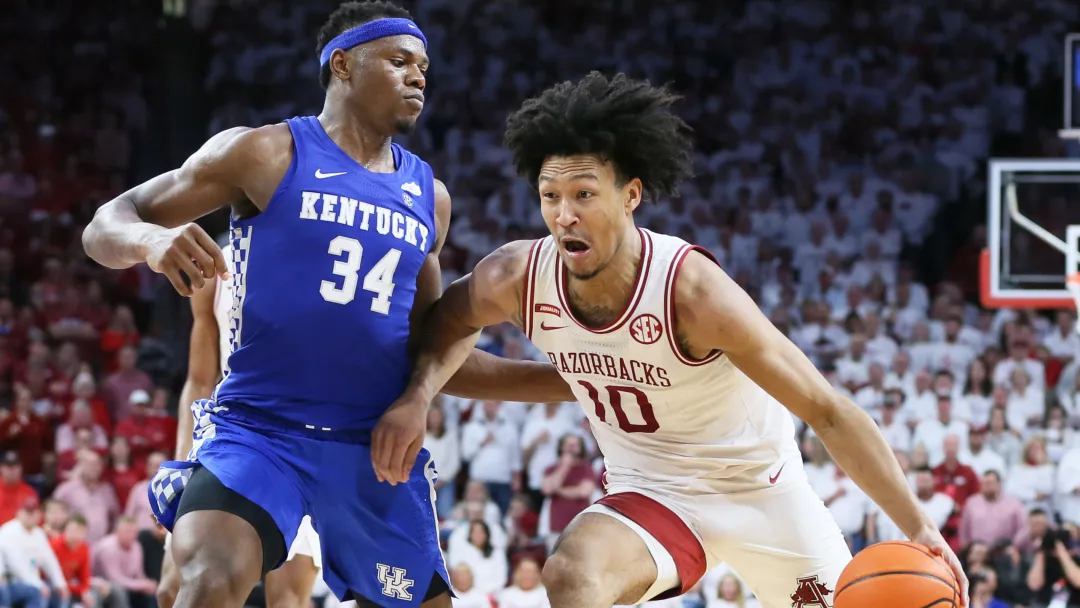
Part 3: First Crack in Hogs’ Financial Armor Becomes Apparent
New team surges into SEC financial elite as media revenue is analyzed
FAYETTEVILLE, Ark. – After examining Arkansas’s financial standing within the SEC over the past few days, it has been revealed that the Razorbacks rank second in the league, just behind Texas A&M.
Revenue from ticket sales, corporate sponsorships, advertising, and licensing shows that Arkansas fans and affiliated businesses provide significantly more support than most other teams in the league. In the last decade, the Razorbacks have generated over $100 million more from these two primary revenue streams than 64% of SEC schools.
Arkansas appears to have established a significant financial advantage over most of the league. Despite this, there remains a quest to understand why the Razorbacks are often seen as underdogs relying on support from their SEC counterparts. This narrative doesn’t hold up under scrutiny, suggesting there may be another area where Arkansas struggles compared to the rest of the league.
The next area to investigate is media revenue. To many casual fans, this might seem unimportant. There’s a widespread belief that the SEC pools all media earnings, divides them equally, and everyone benefits equally. However, the reality is more complex than that.
The league guarantees a foundational sum of money to every school. Recently released figures indicate each program received $51.3 million initially.
In addition to this base amount, there are other financial considerations. For instance, Alabama contributed $6 million to the SEC due to their playoff qualification last year.
Of this amount, the Crimson Tide retained $2 million, with the remainder distributed among other schools. Furthermore, a substantial portion of additional funds, typically around $2 million, was allocated separately to cover expenses such as travel and lodging, further enhancing the revenue stream.
Certainly, there are local media rights like radio and other revenue sources, although these constitute a relatively small amount in the broader financial context. However, it’s uncertain whether the Knight-NewHouse College Athletics Database, used for these calculations, categorizes deals with Leerfield as licensing agreements or true media rights contracts. Given the significant discrepancies in some of these figures, which surpass additional bowl revenues, it is assumed that non-television rights also fall under media revenue.
As with Part 1 covering ticket sales and Part 2 examining corporate sponsorships, the analysis begins with a comparison to Georgia and Alabama, two highly prominent schools in terms of brand recognition over the past decade. The focus will then expand to encompass the entire SEC.
This represents the first sign of vulnerability in the Razorbacks’ financial structure. While Arkansas occasionally records media revenues that exceed those of numerous Division I schools by $70 million, the university has yet to fully capitalize on its potential within the SEC.
Due in part to their struggles in football, the Razorbacks have consistently found themselves in the lower half of the league standings almost every year since 2005.
The only exception was in 2017, when Arkansas just managed to finish in the upper half. Another brief exception occurred in 2015, when the Hogs finished exactly in the middle of the SEC with revenues totaling $35.85 million.
During the mid to late 2000s, the gap in standings didn’t have as significant an impact. However, as the College Football Playoffs became a factor and Arkansas football faced a downturn, their once substantial revenue advantage began to shrink.
Unlike their success in other areas, Arkansas hasn’t consistently outperformed Alabama and Georgia in media rights revenues. Only once since 2005 did the Razorbacks surpass either team, narrowly edging out the Bulldogs by $850,000 in 2015.
The previous year, Arkansas found itself at the very bottom among all reporting schools (excluding Vanderbilt, which does not have to report), and the gap was significant. The Razorbacks experienced a $2 million decrease in media revenue from 2013, a feat that is nearly unheard of as media rights revenues typically increase annually.
In past reports, the Razorbacks’ ranking among SEC teams is detailed, along with the school that led in media revenue that year and the amount that exceeded Arkansas’ earnings. It’s notable that while football is often cited as the main revenue driver, Kentucky consistently leads or closely trails the top spot in the SEC due to its strong basketball program.
Unfortunately for Arkansas, the era of Nolan Richardson had long passed, and the program endured its own downturn, coinciding with a challenging period for the football team. Consequently, these financial outcomes are not surprising. With the advent of the College Football Playoff, Arkansas’ significant financial advantage began to diminish rapidly.
2005: No. 7 (Florida / $2.36 million)
2006: No. 8 (Kentucky / $5.72 million)
2007: No. 7 (Kentucky / $6.52 million)
2008: No. 8 (Kentucky / $6.02 million)
2009: No. 10 (Alabama / $7.67 million)
2010: No. 8 (Alabama / $8.22 million)
2011: No. 10 (Alabama / $6.82 million)*
2012: No. 10 (Alabama / $9.14 million)
2013: No. 11 (Alabama / $11.42 million)
2014: No. 13 (Alabama / $15.28 million)
2015: No. 7 (Alabama / $9.49 million)
2016: No. 9 (Alabama / $15.96 million)
2017: No. 9 (Alabama / $15.44 million)
2018: No. 9 (Alabama / $16.28 million)
2019: No. 12 (Alabama / $21.09 million)
2020: No. 12 (Kentucky / $19.97 million)
2021: No. 10 (Alabama / $19.58 million)
2022: No. 9 (Alabama / $19.43 million)
2023: No. 9 (Kentucky / $17.59 million)
* Not yet in the SEC
Given the significant financial setback for the Razorbacks and Kentucky’s inclusion among the SEC’s top earners due to its frequent first-place finishes in media rights, it is now necessary to update the figures to reflect this latest information. Here are the revised rankings among the conference’s most influential revenue-generating institutions:
1. Alabama … $1,143,851,103
2. Texas A&M … $1,086,807,044
3. Kentucky … $1,036,495,535
4. LSU … $973,772,463
5. Tennessee … $966,460,697
6. Arkansas … $958,946,956
7. Florida … $941,229,811
Kentucky initially didn’t register significantly in the first two categories. However, leveraging its strong basketball program and John Calipari’s influential connections, combined with several successful years in football, propelled the Wildcats to generate a remarkable $627 million in media revenue over the past decade.
This surge allowed Kentucky to surpass Arkansas, which struggled to effectively translate its image and reputation into valued media brands. Despite this, Arkansas benefited from strong fan support and robust corporate relationships, accumulating a substantial financial reserve that still places them among the elite in the SEC after three categories.
Arkansas is among six SEC schools that, due to rounding, can be considered part of the billion-dollar revenue club over the past decade.
While Arkansas remains competitive in overall revenue, there is a clear area of improvement that can be targeted in the coming years.
The arrival of Calipari as the Hogs’ basketball coach is expected to significantly bolster the overall athletics program’s media revenue. His pivotal role in nearly breaking records in this area at Kentucky suggests his expertise can be leveraged to improve Arkansas’ financial standing and aim for a return to the Top 3 overall.
However, Arkansas remains financially on par with the SEC’s top programs, except possibly Alabama, leaving little explanation for why Razorback athletics are perceived and continue to operate as if they are residing in a modest home on a street filled with mansions.
There seems to be a missing piece in Arkansas’ financial strategy that prevents them from rising to the top of the SEC. Otherwise, the ongoing narrative of financial struggle seems unfounded and puzzling.
Perhaps Part 4 of this series will uncover what is hindering the Razorbacks from achieving greatness across all sports, including football.







